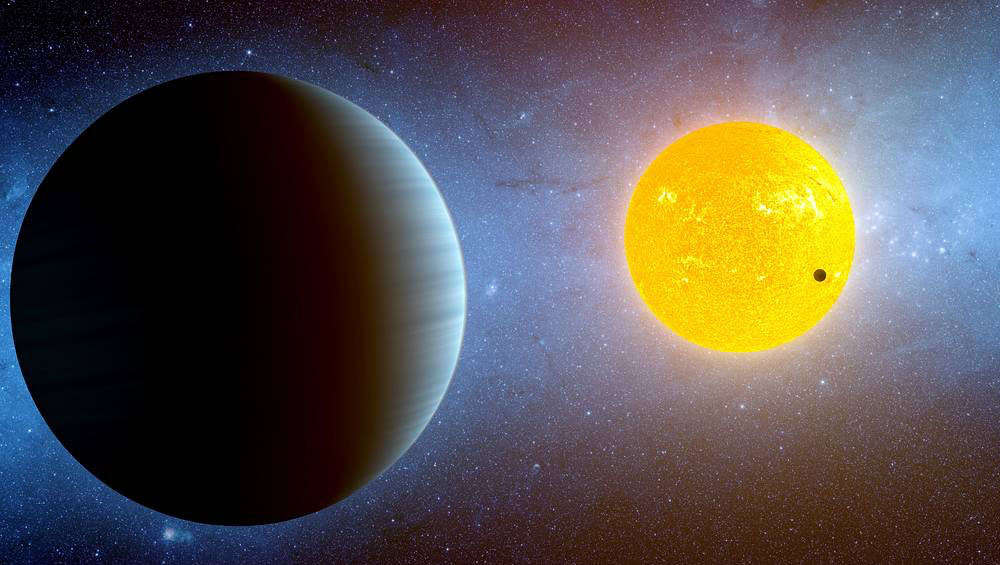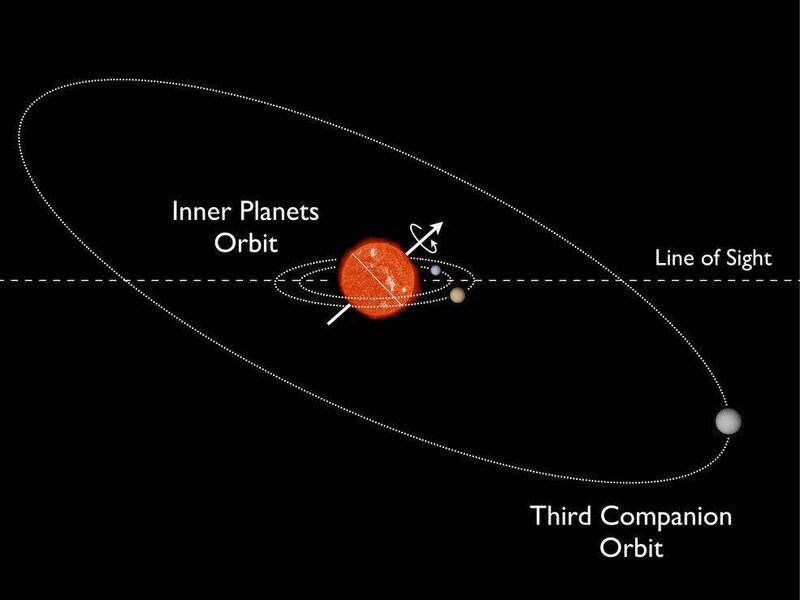Create a free profile to get unlimited access to exclusive videos, sweepstakes, and more!
This backwards star system is like hitting rewind on a cosmic VHS

You’ve heard of stars and planets aligning — but how about rewinding? Triple star system K2-290 has two exoplanets in a retrograde orbit (nothing to do with the dreaded Mercury Retrograde), meaning they orbit their star in the opposite direction that the star is rotating. Meaning, that star’s spin was warped by something. It’d be as if an invisible force completely flipped our solar system, in which the planets all orbit in the same direction as the Sun’s spin. In K2-290, the planets orbit in one direction while the star spins in the other. So who pressed the rewind button on this VHS in space?
The culprit is thought to be another star in the system with monster gravitational force — enough to have made primary star K2-290A change its spin. The orbits of the planets were not affected, but with the star’s spin going the other way, they appear to be orbiting backwards.
“The K2-290 system provides the clearest demonstration that stars and protoplanetary disks can become misaligned due to the gravitational torque from a neighboring star,” said astronomer Maria Hjorth, who led a study recently published in PNAS.
Planets and stars form in a vast protoplanetary disc swirling with gas and dust particles. This disc is thought to already have some motion going on within it, and as all that gas and dust collapses towards one point, that motion supposedly gets it rotating. Stars form from the bulk of this stuff as it accretes in the middle, and if there is enough remaining material, it will eventually form planets from the new molecules that form as it cools. What types of planets come into being depends on the molecules floating around. Rocky planets are made of minerals like silicates and metals, while gas and ice giants are exactly what they sound like. Misalignment doesn’t usually occur if everything goes right.
In K2-290, something must have disrupted the protoplanetary disc and thrown off its spin along with that of the main star emerging from it.
“Systems similar to K2-290, with coplanar planetary orbits and a grossly misaligned host star, had been predicted to exist as a consequence of the tidal torque on a protoplanetary disk from a neighboring star,” Hjorth said.
Torque is the twisting force that causes something to rotate. It can be exerted by gravity, which seems to be what went on in this system. Hjorth and her team think the culprit is the second star in this system, K2-290B, had enough power to reverse the rotation of the protoplanetary disc. They believe primary star, K2-290A, was tilted 124 degrees on its axis and forced to spin the other way because of this torque. This is completely out of whack when compared to our solar system. Every planet orbits in the same direction the sun rotates, even if they don’t always align. Both planets in K2-290 orbit in the opposite direction that their star is rotating in.
Could there be any other explanation besides the second star in K2-290 being disruptive? Probably not.
Monstrous planets are thought to be capable of warping the rotation of protoplanetary discs, if they are traveling in orbits that are wide enough and on a high incline. This is what happened with the Kepler-56 system (above). In K2-290, there is no evidence for a planet that could have reversed the orbits of the planets and the spin of the star. Another thing that can be ruled out is turbulence. While turbulence in space can affect the rotation of a protoplanetary disc, it usually doesn’t cause retrograde orbits, and an infall of star stuff from the disc will usually get in the way before everything starts going backwards.
The astronomers realized they were looking at a rare phenomenon when they caught the planets in transit and saw changes in the star’s spectrum that indicated it was rotating in the opposite direction from that in which they were orbiting.
So what happens if you hit the fast-forward button on the cosmic VHS? It depends on who you ask, but K2-290 staying on eternal rewind is another example of how bizarre things can get out there.















